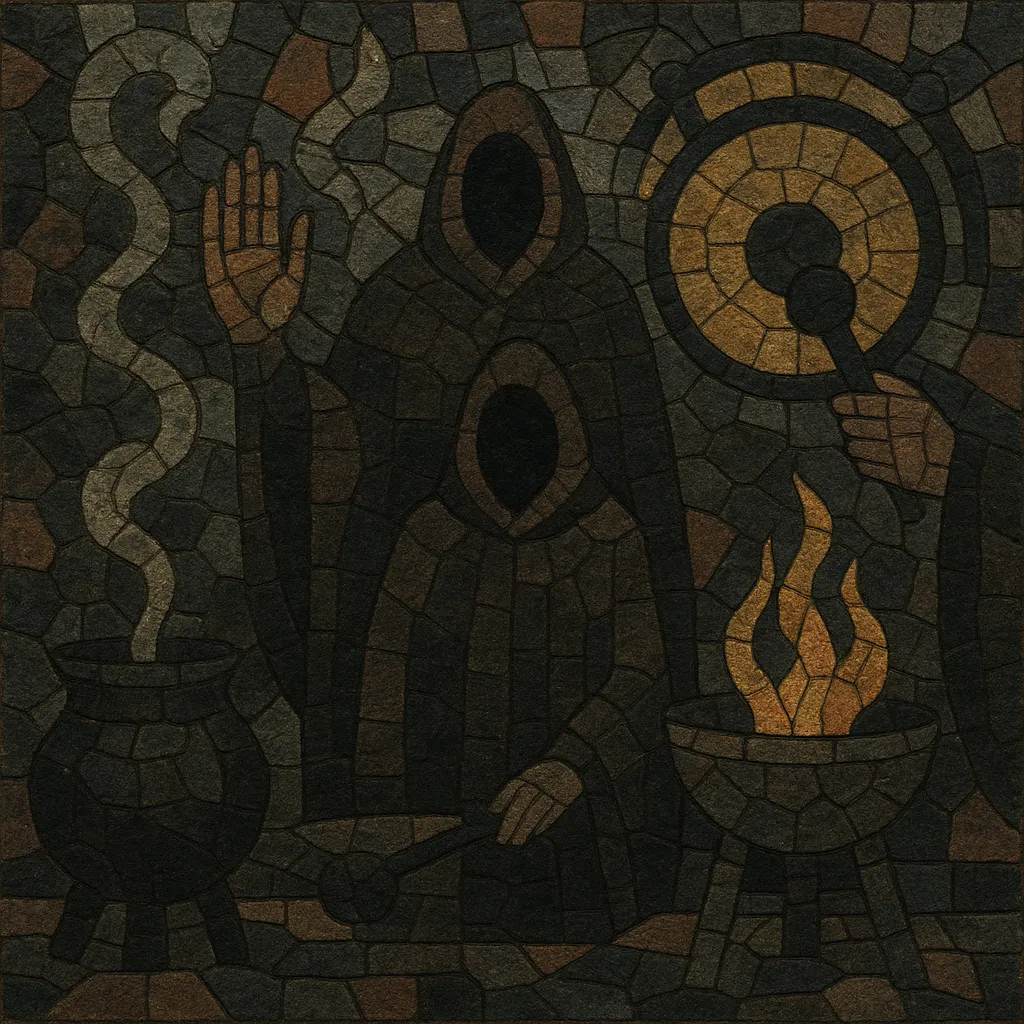Ritual ambient is a dark, immersive branch of ambient and post‑industrial music that evokes ceremony, trance, and archaic spirituality. It emphasizes slow‑moving drones, booming or shuffling hand‑percussion, low chants, gongs, bells, and found sounds that suggest sacred spaces.
Rather than melody and harmony, it prioritizes atmosphere, texture, and spatial depth. Extended reverbs, cavernous low‑end, and cyclical, mantra‑like patterns create an inward, meditative tension that can feel simultaneously numinous and ominous.
Ritual ambient emerged from the overlap of the UK post‑industrial/experimental scenes and nascent dark ambient. Early touchstones came from artists exploring tape manipulation, drones, and ethnographic or ceremonial sound references—e.g., Zoviet France, Coil, and Lustmord—alongside continental projects such as Zero Kama, who famously used bone instruments to accentuate the arcane, ceremonial aura.
The 1990s saw the aesthetic cohere through labels like Cold Meat Industry (Sweden) and Loki Foundation/Power & Steel (Germany). Artists such as Raison d'Être, Inade, Hybryds, Herbst9, and Sephiroth developed a recognizable palette: deep drones, ritual percussion, chimes, low chants, and field recordings in vast reverberant spaces. The approach combined post‑industrial grit with quasi‑sacral ambience and imagined ethnographies, giving the style both mystic and archaeological overtones.
New hubs formed around Aural Hypnox (Finland) with projects like Halo Manash and Arktau Eos, emphasizing trance‑induction through analog ritual tools, environmental recordings, and handmade instruments. Phurpa popularized Bön‑inspired throat‑chant ritualism, bringing more explicit liturgical elements into the fold. The internet enabled broader circulation, and the style became a frequent interlude language in black metal, neofolk, and experimental scenes.
Ritual ambient’s sound design and esoteric imagery have influenced online micro‑genres and theatrical live practices. It continues to inform dungeon synth interludes, atmospheric black metal intros, and the occult aesthetics of witch house and related dark electronic forms, while remaining a distinct, ceremonial branch of ambient.
Aim for an immersive, ceremonial space. Prioritize texture, depth, and cyclical development over conventional melody. Think of sound as a ritual environment the listener inhabits.


